Review: Nokia N8
Oct 4, 2010, 10:16 PM by Eric M. Zeman
Phone Scoop takes Nokia's first Symbian^3 device, the N8, for a spin. How does it stack up against other smartphone systems, can it hold its own?
Form
Is It Your Type?
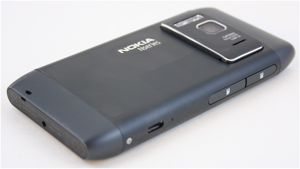
The Nokia N8 is the company's first Symbian^3 handset. It aims high with a capacitive display, a 12 megapixel camera, and penta-band 3G on board. Does the N8 make up for the N97's missteps? Can it recapture the Nokia glory of old? More importantly, is it worth shelling out $550 for? Phone Scoop finds out.
Body
Nokia has never had a problem designing compelling hardware, and the N8 is a shining example of what its engineers can conjure up. It is manufactured with a fine mix of metals, glass and plastic. It has a comfortable weight to it, and the gently rounded edges caress the skin of your hand. Were it not for the large bulge on the back to house the camera module, I'd call it sleek. The top and bottom of the N8 are tapered down, and the device almost resembles a spaceship. It fits into pockets fine, but in tight jeans you're going to notice the camera bulge.
Since it is a touch phone, the N8 is mostly glass on the front. There is but a lone button tucked into the bottom left corner of the front surface. It is a home/menu key; a narrow dash set flush with the surface of the N8. It has good travel and feedback, though I wish it were easier to find with your thumb.
Three of the N8's four edges are replete with controls. Starting at the top, there is a 3.5mm headset jack, a miniHDMI port, and a power/profile key. The HDMI port is protected by a hatch that is easily peeled open. The N8 comes with a miniHDMI-to-HDMI cable adapter to make hooking the N8 up to a HDTV simple.
On the left side, the N8 houses three different ports. The top two are combined into one mega port, and encompass the microSD card and SIM card slots. Yes, the SIM card is easily accessible from the side of the N8. Below these is a microUSB port for charging and data transfer.
On the right side, the N8 has three buttons. Nearest the top is the volume toggle and camera zoom button. It is easy to find, and tiny nubs let your thumb know which is up and which is down. Centered on the right side you'll find the sliding lock switch. I am not a fan of spring-loaded switches for locking/unlocking the screen, but the N8's works fine. I'd prefer it if the power button doubled as a lock button instead, but Nokia devices have historically offered fast ringer profile switching as a secondary function of the power key. Last is a two-stage camera button. The two stages are well defined, though the overall feel of the button is a bit on the cheap side.
Long-time Nokia users will be happy to discover the Nokia micro-pin charging port on the bottom. This makes the N8 compatible with older Nokia chargers and microUSB chargers at the same time.
One oddity of the N8 is that the battery is sealed inside and not user-serviceable. Yup, you read that correctly. The N8's battery cannot be removed and/or replaced.
Despite a couple of drawbacks, I'd call the N8 one of the finest pieces of hardware to come out of Espoo. It's a solid hardware design.
The Three S's
Screen
The N8 has a 3.5-inch OLED display, with 360 x 640 pixels. It is a good display, but it doesn't come close to matching some of the competition's larger, higher-resolution displays. If you hold the N8 close, you will see pixels and some rough edges, but at normal distance (~2 feet), images and icons look clean, with smooth edges. Colors are vibrant and rich, though the overall tone of the N8's themes and menus is muted. As for brightness, it performs very well indoors. No problems at all. Outdoors, it is on par with other OLED displays. On cloudy days, it was easy to see. On sunny days, it was easier to read than competing LCD screens. In direct sunlight, it was almost impossible to use. But the N8 is not alone in this respect.
Signal
Because the N8 has quad-band GSM/EDGE and penta-band 850/900/1700/1900/2100MHz UMTS/HSPA, I was able to test it on both AT&T's and T-Mobile's networks.
AT&T: The N8 performed quite well with AT&T's network in the NYC metro region. It always had three or four bars of signal (out of seven) and I had no problem with voice calls, messages or data. Everything arrived on time, with no delay. I didn't miss any calls, and didn't drop any. The N8 also survived the NJ vault test with flying colors. It outperformed other AT&T devices I had on hand at communicating with AT&T's network. In 3G speed tests, I was able to achieve an average download speed of 2.8Mbps.
T-Mobile: The N8 performed well on T-Mobile's network, but not as well on AT&T's. I did miss two calls, though the N8 didn't drop any on T-Mobile. Text messages and data worked admirably, with no perceived delays. The N8 showed, on average, two more bars in any given location on T-Mobile's network than it did on AT&T's, although signal strength doesn't always play a large role in real-world performance. Speed tests were slightly under AT&T's, and averaged 2.6Mbps.
Sound
Again, we tested phone call quality with both AT&T and T-Mobile. For both networks, earpiece and speakerphone volume were very good. Some users might wish both had just a little bit more juice, but the N8's volume will suffice.
Nokia has a great track record on call quality, and the N8 is no disappointment. Using both networks, the N8 sounded not just good, but fantastic. No echoes, no noise, no dropped volume or clipping — just great phone calls. Honestly, I was stunned; the N8 is one of the best-sounding phones I have tested.
Battery
The N8's battery life is good, but it varies widely depending on how the device is used. One thing to avoid: using screen savers of any kind. Screen savers on the N8 run when the phone is asleep. Even with a simple clock floating around on the display, battery life is halved by using the screen savers. Skip 'em. GPS, Wi-Fi, and Bluetooth all play a role in battery life, too. Use them only when you need to. As for the networks, I didn't notice a discernible difference in battery life between T-Mobile and AT&T.
Otherwise, the N8 performs very well. Battery life easily surpasses a day and stretches well into the next. Being the cautious fellow that I am, I'd charge every night, but many users won't need to.
Basics
Menus
Symbian^3 (S^3) is a brand new version of Symbian. Nokia's S50 5th Edition was essentially Symbian^1; therefore, S^3 is two generations later and ought to be better, right? It doesn't quite pan out that way.
The N8 has three home screens, each with its own set of widgets. Anyone familiar with S60 is going to feel at home. The main home screen has the clock, date and time; profile setting; eight application shortcuts; and two widgets. Clean, it is not. All of the home screen elements are different shapes and sizes, adding an unwanted element of chaos to the way it feels. There is also a dock that persists across the bottom edge of all three home screens, which provides access to options, the phone app, and screen switching.
The secondary two screens are pre-populated with widgets, such as ESPN, CNN, and so on. They display the latest headlines, and news feeds, and can be rearranged, deleted, or added to. Press the on-screen Options button to make adjustments to the home screens' appearance and widgets' behavior.
From the home screen, if you press the home button on the front of the N8, it takes you to the main menu. If you press the home button while in any other application on the device, it takes you back to the central home screen. This takes a little getting used to. Press and hold it to access the task manager/app switcher function.
The main menu strongly resembles that of older S60 models. The overall look at feel is decidedly "Nokia." It is laid out grid-style, with 12 icons. Users can switch the main menu to list view, as well as rearrange where the menu items are located on the screen.
These main screens aren't awful, and make sense in a way. But the learning curve is higher than with other, competing platforms. It definitely is not intuitive. (Thankfully, however, Nokia has ditched the one-tap, two-tap nonsense that plagued S^1/S60 5th Ed.)
Things start to get fuzzier once you dive deeper into applications. Individual app menus come in a jumble of tabs, drop-downs, pull-downs, and extended options. You can find yourself layers and layers deep in the OS trying to find stuff, just as with old S60 phones.
What about performance? In a word: Inconsistent. Some times home screens, apps, and widgets worked flawlessly, and other times the phone crashed hard, froze, and needed to be reset. I'd say about 20% of the time you're doing anything, the device would just give up and not respond to any input whatsoever.
Sometimes you'd get the domino effect, and the N8 would suddenly respond to a dozen key presses all at once and you've suddenly called Uncle Bob in Tahiti. Very frustrating.
The problem is, the N8 multitasks too well. It will allow you to stack up running app after running app until the device just can't handle it any more and crash. It would be better if only X number of apps were allowed to run in the background, preventing the memory sabotage issue.
To put it bluntly, Nokia still has a long way to go when it comes to improving the overall look, feel, and usability of the user interface. It continues to be a weakness.
Calls/Contacts
Calls
Making and receiving phone calls on the N8 is about on par with other touch-based phones. It's a bit more menu-driven than just-type-on-the-dialpad-dummy. The software Call button persists on the three home screens. If you are anywhere else in the phone's UI, however, you have to exit out and get back to the home screen before you can make a call. Incoming calls interrupt whatever it is you might be doing, and the software controls allow you to ignore it, answer it, etc.
Given the size of the N8's screen, I would have preferred a larger software dialpad, but typing in numbers on a touch phone is slowly becoming less commonplace. Most people will initiate calls directly from their contact database. Start to type a name or number, and the N8 searches your contacts for matching letters/numbers. This search can actually be turned off, if you wish, though I can't imagine why.
In-call options are all accessed via the software Options button. It offers a robust number of features, including three-way calling, access to other apps, and so on. I was able to merge calls easily, as well as switch between two separate calls.
Contacts
The only way I was able to sync my vast contact database with the N8 was to set up an Ovi account and use Nokia's account sync tools. They are clumsy, and not as simple as those offered by others. For example, it took efforts across multiple days to even create an Ovi account. The phone just didn't want to let me do it. Without an Ovi account, it's pretty hard to back things up, especially as a Mac user.
As for the contact application itself, it appears to be almost identical to the S60 contact app. It's barren and boring, but offers plenty of fields for contact data. It offers minimal rich cross integration with social networks, for example. It's a silo'd application that interacts only with the phone and messaging apps.
Messaging
Same as most modern smartphones, the N8 supports nearly every means of mobile communication there is. Email, MMS/SMS, video share and more are all on board.
There is a POP3/IMAP4 email client on board to handle Yahoo, Gmail and other consumer email systems. There is also an Exchange email program for business users. I was unable to get the Exchange app to work with Gmail, but the IMAP4 version of Gmail worked just fine once I entered my credentials.
The N8 was able to retrieve email consistently and easily. Messages arrived at the same time on the N8 as they did on the other half dozen devices sitting on my desk (you should hear them all chime at once, it's really something). However, the email app is very unattractive to my eyes. Emails can be sorted via date, sender, subject in the inbox via software tabs at the top. These same tabs let you jump between email folders. It just doesn't look as pretty as email does on other platforms. The N8 is capable of displaying HTML emails without trouble, and cleaning out your inbox isn't painful by any means. The only thing I really can't stand is the email composition screen. It looks awful, like email for 1st Graders who need to learn to compose emails in a framed environment. It's so ugly. But what do I know, you may think it is lovely.
The SMS/MMS has been improved with better inboxes and threaded messaging. It still isn't as good as some of the competition, but it's far better than it used to be. Text conversations appear in bubbles, and images appear in-line with the text. The one wacked-out thing is that if you want threaded messaging, you have to choose the "Conversations" inbox. The regular "Inbox" shows only in-line texts as they come. Every other smartphone platform does a better job of threaded text messaging.
Missing in action? Instant Messaging. I was unable to locate an IM app on board the N8. Nor was I able to find anything suitable in the Ovi Store.
The video share feature also doesn't work out of the box. It may work with AT&T after contacting them and spending hours on support calls, but my quick efforts at connecting video calls failed. (T-Mobile's network doesn't support this feature.)
As far as social networking goes, the N8 ships with a catch-all social networking app that bundles together updates for MySpace, Facebook and Twitter. I attempted to find S^3 apps in the Ovi store that could handle Facebook and Twitter, but there are no native ones. You'll have to settle with a third-party app, or fall back on Facebook.com and Twitter.com.
In portrait mode, the N8 only shows T9-style text entry tool. If you want to use the QWERTY, you have to rotate the phone sideways. In practice, though, the software QWERTY performed pretty well.
Messaging on the Nokia N8 continues to be sub-sub-par when compared to the competition.
Extras
Media
The N8 is a formidable multimedia monster.
Music
The N8's music player offers few updates when compared to the older S60 media player. Essential functionality is the same. Open the app, and you have access to artists, albums, and songs. Chose your favorite sorting option, pick your playlist, and enjoy the tunes.
The main player has typical controls. Users can also easily set up loops and shuffle tracks. There are several controls for adjusting the sound quality. First, there are some preset equalizers. (It boggles my mind that S40 handsets offer 7-band user-adjustable EQs, but the N8 doesn't.) The N8 also allows users to adjust stereo widening effects, as well as the L-R levels when connected to stereo headphones.
The one new thing Nokia has added is the CoverFlow effect, which allows you to sort through your library visually via album artwork. I like CoverFlow, and it works fine on the Nokia N8.
Music playback sounds really, really good through stereo headphones. As a certified audiophile, I have no real complaints about how good the sound is. Sound was also good through stereo Bluetooth speakers, though with the typical stereo Bluetooth detractions.
Video
The N8 also has a capable video player, and some serious sound-processing software on board, including Dolby 5.1. I sideloaded a movie onto the N8, hooked up the HDMI cable to my HDTV, and enjoyed some "Live Free or Die Hard" on my TV. The picture quality wasn't HD because the file was encoded thus, but it was definitely DVD quality . The digital movie is properly encoded with Dolby 5.1, and the N8 was able to pass the signal successfully through my living room home theater rig for large, booming sound. Due to the HDMI cable set-up, the N8 serves quite well as a portable video player. Throw in the N8's 720p HD video recording, and you get the basic idea what Nokia was going for with the N8.
Camera
Camera
Anyone who's ever used a Nokia camera phone will feel right at home with the N8's 12 megapixel monster. The camera can be opened either from the dedicated button or main menu. It launches quickly.
Once open, there are a number of on-screen controls. The bottom left offers access to a general Options menu. On the right side of the screen, Nokia has positioned quick access to the video camera, flash settings, and then the full settings tool.
The full settings menu looks identical to that of devices such as the N95, N96 and N97. Here, users can adjust scene modes, face detection, white balance, exposure, color balance, contract, sharpness, light sensitivity, and so on. Everything defaults to the "Auto" setting.
Once your settings are all in place, taking shots is a breeze. Unlike some of the N8's predecessors, it focuses quickly and shoots pictures quickly, getting you back to the camera faster. Each image is previewed after taken, and users can at that moment choose to edit it, view it, save it, or send it somewhere.
Gallery
The gallery application is a grid of thumbnails. The thumbnails are pretty small, and it's actually a bit tough to see enough detail to know what image you're looking at. Pressing any of them opens up the image on the screen.
Swiping left or right pages your through your image library. The editing tools are quite robust. Some of the options include rotating, resizing, cropping, as well as a number of effects, such as bubble text, clip art, stamps and so on. For the control freak, there's also fine tuning of exposure, white balance, contrast and so on. There's also a funky effect that lets users stretch, compress, and otherwise mash the image. Think of this as a great tool with which to embarrass your friends.
Once images appear as you want them to, the N8 allows for easy attachment to outgoing messages.
Photos/Video
Pictures
The N8 has a 12 megapixel camera. That's a lot more than most other camera phones out there, and makes the N8 a bit of a target. In simple tests, most users will find the N8's images to be quite good, though it still takes some crummy shots, just like every other camera phone. It is an advanced camera, and has lots of options. My guess is most normal people won't bother with a lot of the fine controls, and will simply shoot away.
When used outdoors in bright sunlight, the N8 delivered crystal clear shots with perfect exposure most of the time. Several shots were overexposed, or had white balance that was off a bit. Focus was mostly good, and I noticed very little grain.
When indoors, it performed better than many other camera phones on the market. The fast focusing and real Xenon flash go a long way to getting things right. Though, as with all flash photography, shadows and dark spots are plentiful.
With so many pixels, users will certainly want to blow up some images captured with the N8, and those images will look great.
Video
The N8 can shoot 720p HD video, as well as dial it down to email and MMS-friendly resolutions. It offers stabilization and other controls so that users can adjust its behavior to match the environment. The N8 did a fine job at capturing video, and I was mostly pleased with the results. Sure, there's grain here and there, and sometimes the sensor wasn't able to handle large swings in lighting, but by and large it produces clean, usable video that people will want to share.
Browse/Customize
Browser
The N8 has the venerable S60 browser, which, though based on WebKit, doesn't hold a candle to other WebKit browsers available in the market. Its biggest fault? No address bar.
Having an address bar at the top of web pages that is easily accessed by pulling down on a web page is vital for touch phones. Instead, on the N8, it is a two-step process to bring up an address bar for entering URLs. This really slows down browsing, in my opinion.
There is a transparent double-arrow that floats in the bottom right corner of the N8's browser screen. Press it to open the site navigation tools, such as a search bar, the options button, or bookmarks. The browser is far too menu-driven, in my opinion.
This same basic S60 browser first appeared on devices as long ago as 2006. While Nokia attempted to touch-optimize it for Symbian^3 - and it's far better than most feature phone browsers - it's still not as finger-friendly as it could be. For example, the "Back" function in the browser offers a neat, visual stack of web sites and lets you pick which you navigate to. The problem is, it is so sensitive that it's nearly impossible to fine-tune your selection to get the exact page you want. Very frustrating.
Despite those issues, it still does a fine job at rendering HTML web sites, and content looks good for the most part. Browsing speeds were more than adequate on both T-Mobile and AT&T's networks. I had no trouble loading pages.
Customize
The N8 allows for some customization. It comes with a number of wallpapers and themes, and users can easily adjust ringtones, and that type of stuff.
On a deeper level, the home screens can be customized with widgets. There are a limited number of pre-loaded widgets, but there is quite a large catalog of them in the Ovi Store. These widgets pull down web content and can be used to deliver info to the home screens of the N8.
Each of the home screens is limited to just six widgets, and they all appear stacked one on top of the other. I don't care for the way it looks, but others might. Of course, the main menu can be rearranged, and also configured to appear in list form.
What I dislike most — the fonts and most background colors — can't be adjusted.
Extras
Apps
The N8 has access to Nokia's Ovi Store. There are thousands of apps in there that are compatible with the N8. As with other mobile stores, the Ovi Store offers both free and for-pay apps. The prices ranged from dollars, to Euros, to Sterling, to Yen. I can't really say how an American is supposed to make a payment in Sterling. Still, the apps are there, as are widgets.
Bluetooth
The N8 is one of the few handsets on the market to ship with Bluetooth 3. The main benefit of Bluetooth 3 is faster data transfer speeds. Sure enough, once paired with my PCs, I was able to transfer data very, very quickly. Bluetooth 3 requires both Bluetooth and Wi-Fi radios to be on. The Bluetooth radio handles the connection and pairing, but the data is actually sent via Wi-Fi. A 5MB song, for example, took about one minute over Bluetooth, but only 7 seconds over Wi-Fi.
The N8 also paired well with mono and stereo headphones. Sound quality through mono Bluetooth for phone calls was superb. Music playback was only slightly less awesome.
Clock
Need to tell the time? Easy. Press the Home screen button, the power button, or the lock switch. Any of these will light up the display in stand-by mode, which displays a large analog clock. (For the non-analog fan, it can be set to digital.) You can also set one of the screensavers to be the clock, though this eats into battery life.
GPS
The N8 comes with Nokia Maps on board. I don't care for the user interface of Nokia Maps at all, but the features are solid and work well. The N8's GPS system was able to pinpoint me easily, often to within 10 feet. Mapping directions from Point A to Point B was no problem. I really like how it supports rudimentary 3D maps, which provides a neat view of the surrounding landscape when in urban environments. Nokia Maps offers free turn-by-turn directions, and they worked perfectly each time, for driving, walking, and mass transit. I was also able download and use Google Maps, too. It worked fine, and didn't appear to be much different than for other platforms.
Video
Wrap-Up
The N8 is a solid effort from Nokia that has many strengths. The hardware is excellent all around. The controls all work, the device feels good to hold, and it has a nice, bright screen with decent resolution.
Phone call quality, signal performance, and battery life are all commendable. Phone calls, in particular, were impressive. For those who need a device that covers the basics well, the N8 delivers.
Multimedia is another strong suit with the N8. The music and media players are both capable, and the imaging and video-capturing abilities rank high. If the are your primary uses, you'll do well with the N8.
However, the N8 falls way short when it comes to messaging and social networking. Nokia's email and SMS software simply doesn't compare to what's offered by other platforms. The message tools are clunky, look dated, and take too many steps to complete. The lack of native social networking applications is a severe blow, and the third-party apps available to fill the gap don't exactly set the market on fire. (Gravity is one solid option, but it costs a whopping $10.)
One of the biggest problems facing the N8, at least for U.S. customers, is the price. None of the major network operators offer it on-contract at a subsidized amount. It costs a full $550. That's more than twice as much as the competition (which often offers better features).
Is the N8 worth $550 to the average American? No. It is not. Nokia and Symbian fans, however, may find enough to like to make the N8 worth it.

Comments
Contacts and other negatives
I understand you dislikes on certain UI features, but some like and some don't. I like most of them.
There are some comments and disagreements I would like to share
1. Contacts
"They are clumsy, and not as simple as those offered by others. For example, it took efforts across multiple days to even create an Ovi account."
Creating Ovi account took multiple days? Really? Never heard from anyone.
Nokia N8 has excellent and intuitive contact application that not only work as simple contact application but extends its reach to Social media. When I got my N8 I first used Mail fo...
(continues)
(continues)
Frowny Face
Too bad we're not at the point where one could sideload a different operating system onto any smartphone hardware.
If open source continues to gain steam the day may be two to three years out when ...
(continues)
(continues)
Symbian^3... better or worse than S60?
I enjoyed both S80 and S60 immensely. Some of the features that Eric lists as negatives of S60 are actually some of the features I appreciate the most about S60. I love S60 3rd Edition, especially Feature Pack 2. My current phone (a Nokia E75) does not have any issues or insurmountable problems to speak of. It does not crash, it does not pause for long periods of time when the screen rotates, it takes pictures in a snappy manner, and everything works properly (including the browser).
However, S60 5th Edition was, in my opinion, the first departure from decency for Nokia. I finally played with a Nokia 5230 Nuron, and found that I did not like the two-tap interface method. The touch screen was resistive, and re...
(continues)
(continues)
but i think the n8 is capacitive(?)
and they moved to non-removable batteries to make it thinner. its not very friendly for people who like buying non-original batteries but im guessing they are so confident in ...
(continues)
Contacts
Seriously? You can't sync contacts with Exchange and/or Outlook?


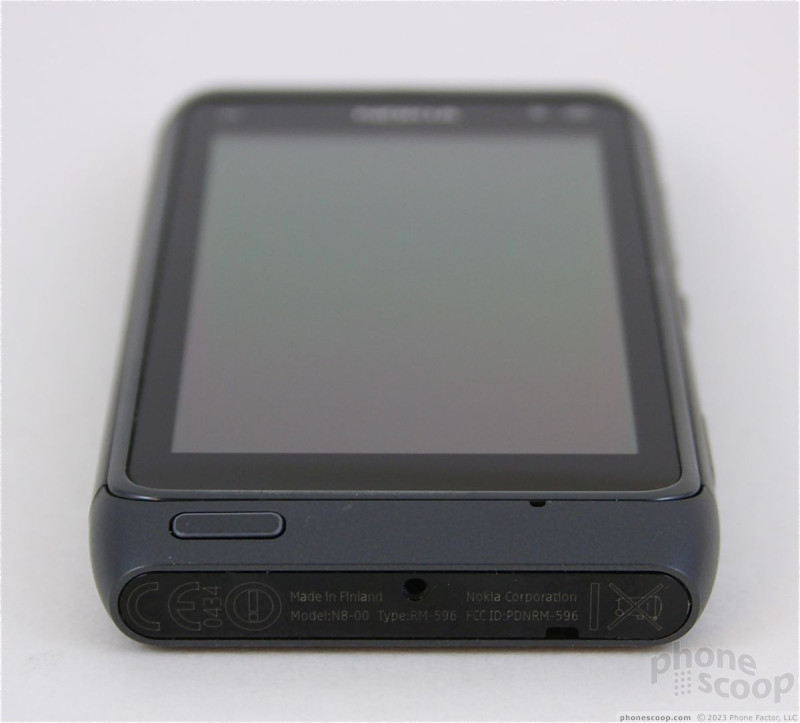








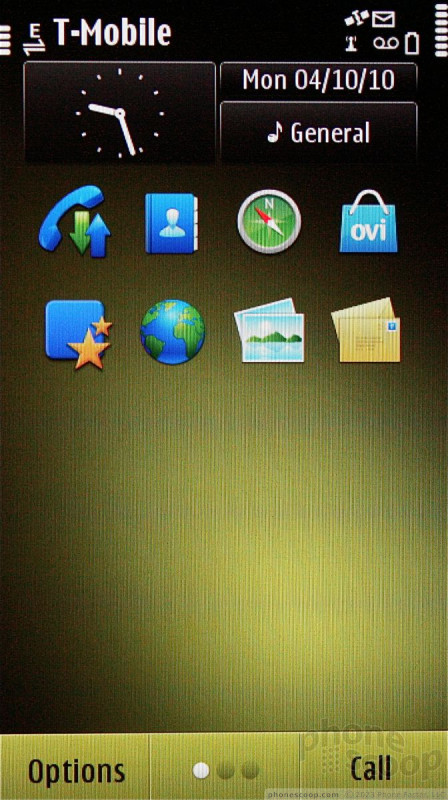







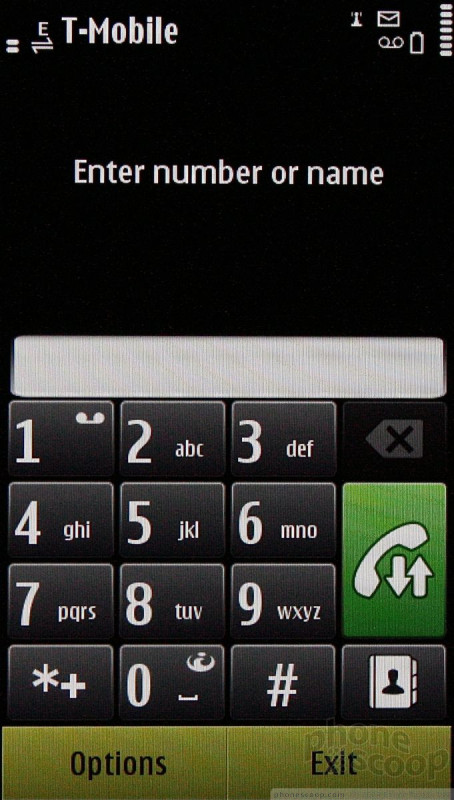




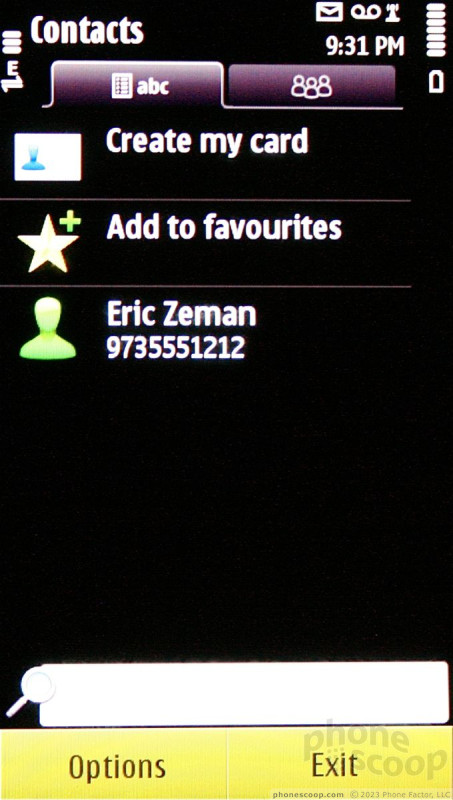



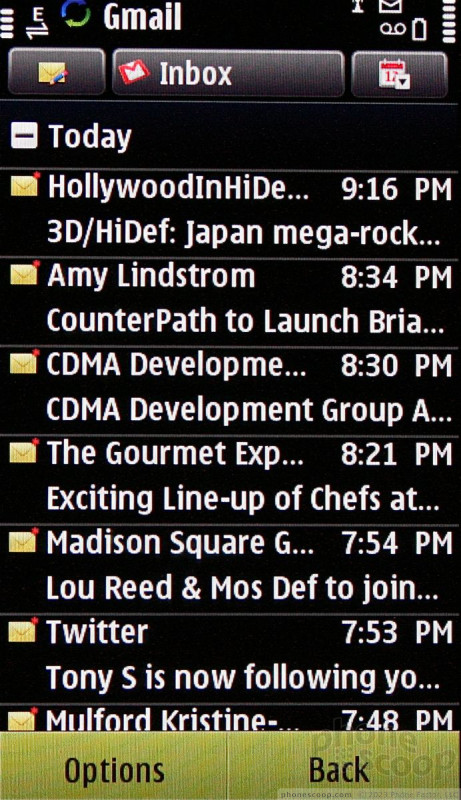









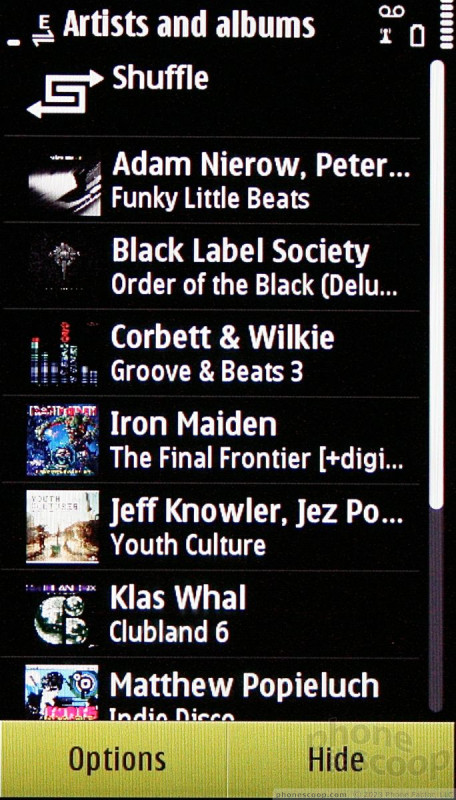




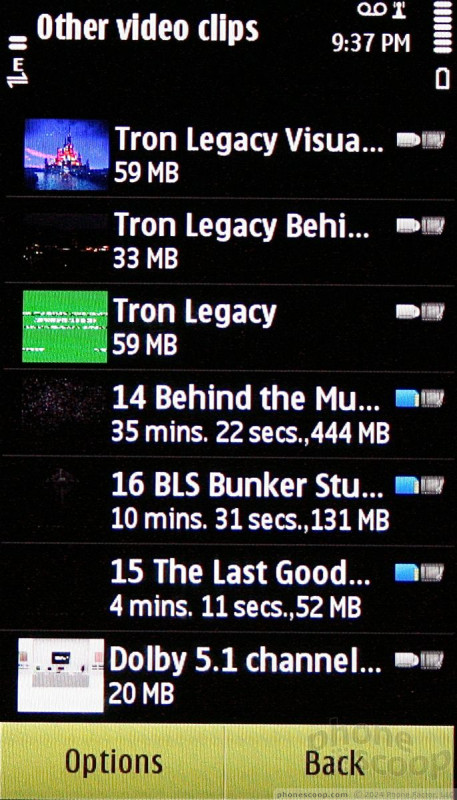




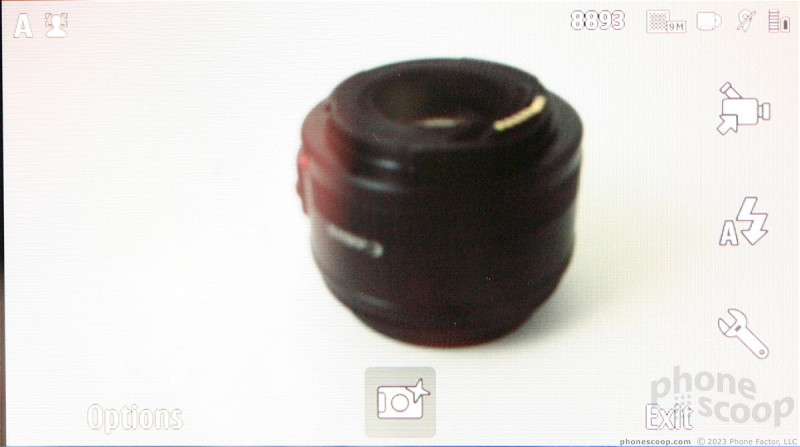




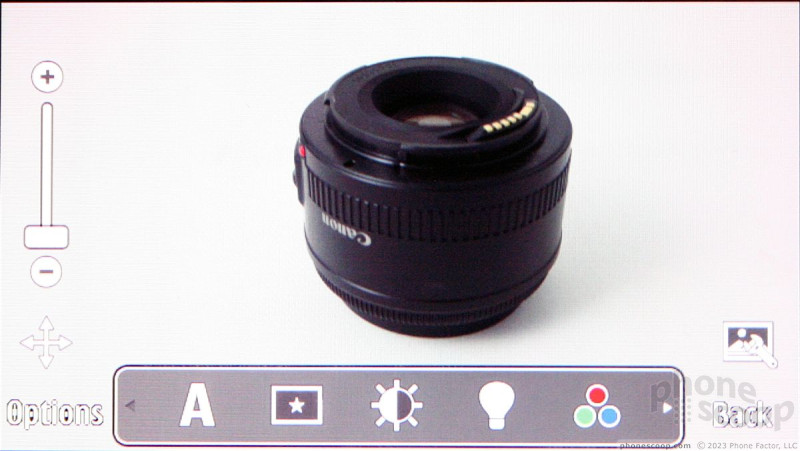








































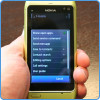 Hands-On: Nokia N8
Hands-On: Nokia N8
 Hands On with JLab's $30 ANC Earbuds
Hands On with JLab's $30 ANC Earbuds
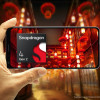 Qualcomm's New Chip for Entry-Level Phones Moves to 4nm
Qualcomm's New Chip for Entry-Level Phones Moves to 4nm
 Sony Updates its Flagship Xperia 1 to Mark 6
Sony Updates its Flagship Xperia 1 to Mark 6
 Nokia N8-00
Nokia N8-00


